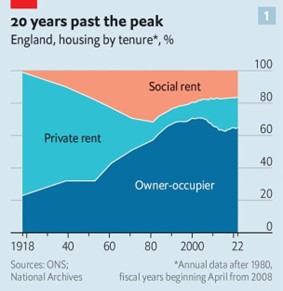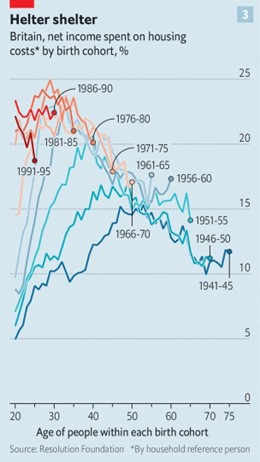The general election is well underway. Across the country, thousands of Labour activists are speaking with voters and making the case for them to put their trust in us.
By all indicators, Britain is sick of fourteen years of Conservative failure. Only 15% of voters are satisfied with the government, and only 16% with Rishi Sunak’s record.
But we cannot take for granted the millions of voters intending to vote Labour, and need to reach out to the millions still who have not made up their minds. The need to make the case for a Labour government is greater than ever.
Voters may be sick of the Conservatives, but will still ask that crucial question: “what will Labour do differently?”
Housing is one of the sharpest dividing lines of this election. As the housing crisis intensifies it has risen up the list of voters’ priorities. It is an area where the Conservatives have most evidently failed, and where Labour has a clear plan.
Labour’s manifesto may well drop soon- this usually happens three weeks before an election. But, until then, how do we answer this question from voters?
Delivering the homes we need
Since the Second World War, the UK has failed to build 4.3 million homes compared to the average European country. Campaigns across the political spectrum recognise the need to build at least 300,000 a year to meet this backlog.
The Conservatives promised this at the last election, but repeatedly failed to deliver. They dropped a promised reform of the planning system to get Britain building, and scrapped their own housing target to appease their own backbenchers.
Meanwhile, a decade of austerity has hollowed out council planning departments, preventing them from making local plans to let communities have a say in what homes are built where. By accelerating the Right to Buy they sold off 113,000 council homes, while the number of households in temporary accommodation has soared to over 100,000.
Labour has a plan to undo these mistakes. With a sizeable majority, Labour will have the ability to reform the planning system to get Britian building, prioritising brownfield land to deliver 1.5 million homes over the next Parliament. By also reforming planning and slowing down the Right to Buy, Labour plans to deliver the biggest boost to affordable housing in a generation.
This won’t just be a builders’ charter either. By recruiting 300 extra local planners, Labour will empower local communities to take back control of their local areas and have a say over what is built where. And Labour will ensure that Section 106 agreements by developers are met, so that essential schools, roads, and GP surgeries are delivered alongside the homes we need.
Key to this will be a fresh generation of New Towns, built with mandated principles behind them, of 40% affordable and social homes, community infrastructure, transport links, and beautiful design.
By delivering the homes the country needs, Labour will put in the cornerstone to tackling the housing crisis.
Ending exploitation in the private rental sector and leasehold
The housing shortage has enabled bad actors in the private rental sector to abuse their power. While rents skyrocket, tenants are forced into overcrowded, poor-quality accommodation, often with the threat of eviction if they ask for even the slightest improvements.
The Conservatives came to power with a crystal-clear commitment to strengthen renters’ rights, and even introduced legislation in 2021 to do so. But the chaos of three prime ministers and sixhousing ministers, and the opposition of a hardcore lobby of landlord MPs have obstructed progress, and so Rishi Sunak failed to get this bill passed into law.
Not only will Labour strengthen protections for renters, but they will go further to ensure that they have the stability they deserve. A Labour government will end Section 21 ‘no-fault’ evictions, ensure that reported hazards in private rented homes are investigated within 14 days, and outlaw rental bidding wars.
Similarly, the Conservatives promised to reform the feudal practice of leasehold, to protect leaseholders from exploitative service charges and unfair practice. But, once again, this was watered down. A Labour government will pick up their mess by implementing the thorough recommendations for reform presented by the Law Commission.
Better and warmer homes
The UK has some of the oldest housing stock and least energy efficient homes in Europe. As a result, residents pay more for less, with higher energy bills, colder homes, and health risks from damp and mould, while heating our buildings also comprises 14% of our carbon emissions.
Improving the quality of our homes will improve lives, tackle climate change and make the UK less reliant on oil-rich dictators like Vladimir Putin.
But Rishi Sunak has failed to take the necessary steps to improve home quality. Not only did he scrap the UK’s Energy Efficiency Taskforce as a political stunt, but his Great British Insulation Scheme, designed to insulate 300,000 homes by 2026, has so far only helped 7,720 households.
Labour has a clear plan to improve home quality for the millions impacted by our poor-quality stock. A Labour government will introduce a ‘Decent Homes Standard 2’ for the private rental sector, after the first iteration by the Blair government improved lives for millions of renters. Meanwhile, a Warm Homes Plan will insulate 5 million homes by 2030, bringing them up to a minimum EPC C rating.
Reasons for hope
Fourteen years of Conservative housing failure have left the whole country footing the bill. But a Labour government with the energy and passion for change can put a stop to this. The party has a clear plan to deliver the homes we need, improve the ones we have, and protect from exploitation those at the sharpest end of the housing crisis.
“What will Labour do differently?” In housing, a hell of a lot.
















